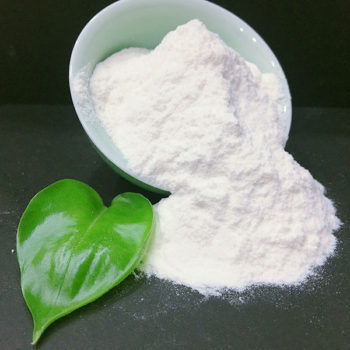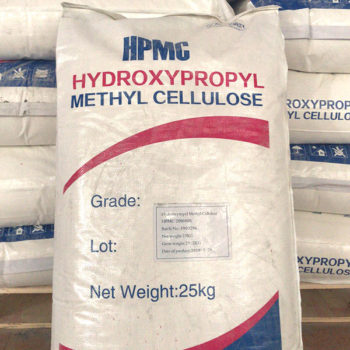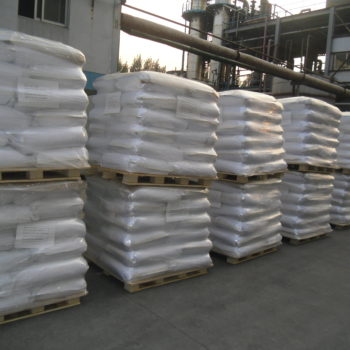Common questions about cellulose products and their applications Part I: Basic problems of cellulos ether
1. Mechanism of thickening and swelling
The mechanism of thickening and swelling of hydroxyethyl cellulose 250HHR PC has two main points:
− The hydroxyl group of hydroxyethyl cellulose forms a hydrogen bond network structure with water molecules
− entanglement between long and long chains of hydroxyethyl cellulose
2. How is cellulose dissolved better?
Take HEC as an example. For example, 250HHR PC has several different dissolution methods:
1. Add HEC powder in water at room temperature, stir and disperse for about 10 minutes, adjust the pH to above 8, and the system begins to thicken, ensuring that the mixing is completely uniform;
2. Add HEC powder to the water at room temperature for 10 minutes, heat to 50-80 degrees Celsius, the system will become viscous and transparent, ensuring uniform mixing without fish-eye particles;
3. Adjust pH and temperature at the same time, the fastest.
3. What is the essential difference between different celluloses, such as hydroxyethyl cellulose and hydroxypropyl methyl cellulose?
Cellulose products are all derived from natural cotton pulp or wood pulp and are obtained by etherification reaction. Different cellulose products use different etherifying agents.
For example, the etherifying agent use in hydroxyethyl cellulose (HEC Basic problems of cellulose ether) is ethylene oxide, and hydroxypropyl methylcellulose (HPMC) uses other types of etherification. Agents (chloromethane and propylene oxide).
The most essential difference between HEC 250HHR PC and HPMC is that the substituent groups, molecular weight and degree of substitution are different, which determines the difference in performance between the two.
4. Why is the HHR-250 not neutralized?
Cellulose (CMC, HEC, HPMC, HMHEC, HPC) products are generally not neutralized, these are directly hydrated hydrophilic water soluble polymers.
For HEC 250HHR PC, HMHEC (Natrosol Plus 330 CS). Considering that it has good dispersing properties in cold water, it is easy to handle and has a small amount of hydrophobic treatment material on its surface. Improved cold water dispersion performance.
HEC (250HHR PC) and HMHEC (Natrosol Plus 330 CS) are usually dispersed in cold water and then combin with a thermal process to dissolve quickly.
5. What is the standard Chinese name of CMC? Is there no such name in the 2015 edition?
The standard INCI name for sodium carboxymethyl cellulose CMC is cellulose gum.
6. What is the effect or effect of different cellulose on the formulation during use?
For example, HEC (250HHR PC) and HPMC have the following effects on formulation performance and process:
(1)
− HEC has stronger hydrophilic properties than HPMC and can form more hydrogen bond network structures with water. This is manifest in HPMC having a gel temperature.
For example, some specifications of the gel temperature is 70-80 degrees, that is, the temperature rises to 70-80 degrees, HPMC will show the nature of hot water insoluble. With this property, HPMC can be pre-dispersed with hot water above the gel temperature point.
− The surface tension of HEC is close to the surface tension of water. The surface tension of HPMC is relatively low, about 45. Therefore, HPMC has the ability to reduce the surface tension of the system and is apply to the surface active system.
In addition to providing thickening properties, it can also help foam and stabilize foam. It can also help to improve the thermal stability of the system. However, it should be note that cellulose products have relatively low yield values and do not have good suspension capacity.
The contribution of HPMC in thermal stability is only relative to HEC. It is unrealistic if an unstable system relies entirely on HPMC to solve thermal stability problems.
(2)
− HEC (250HHR PC) has a hydrophobic surface that can be disperse in cold water (no clumps). If it needs to dissolve quickly, it needs to be heat to about 70 degrees after being dispersed in cold water. Dissolve by stirring for a suitable period of time, or by a cold process to increase the pH of the system.
The rapid dissolution mechanism consists in dissociating the hydrophobic surface treatment material from the HEC structure by thermal energy or alkali, exposing enough hydroxyl groups to form a hydrogen bond network structure with water.
Thereby fully hydrated to dissolve, forming a consistency. Ashland HPMC has no hydrophobic treatment on the surface, and it is easy to open when it is directly add to cold water. The recommended process is to use HPMC in advance in hot water, or in a polyol (glycerol, 1,3 butanediol, etc.), and finally add to cold water to dissolve.
The HPMC used in Ashland Personal Care is the same size and quality control as HPMC for food use. Ashland HPMC can be apply to personal care products that come into contact with mucous membranes, such as toothpaste.
(3)
− HEC has a strong salt tolerance (NaCl) and can be use for thickening bath salts in liquid form. The mechanism is that HEC is a non-ionic cellulose product and has strong hydrophilic properties. Excessive electrolyte intervention will not easily allow it to precipitate out of the water. The salt tolerance of HPMC is relatively weaker than HEC.
If you have any questions, you can send them to my email : tanyatao@qinahaochem.com
whatsapp: 17718245679



